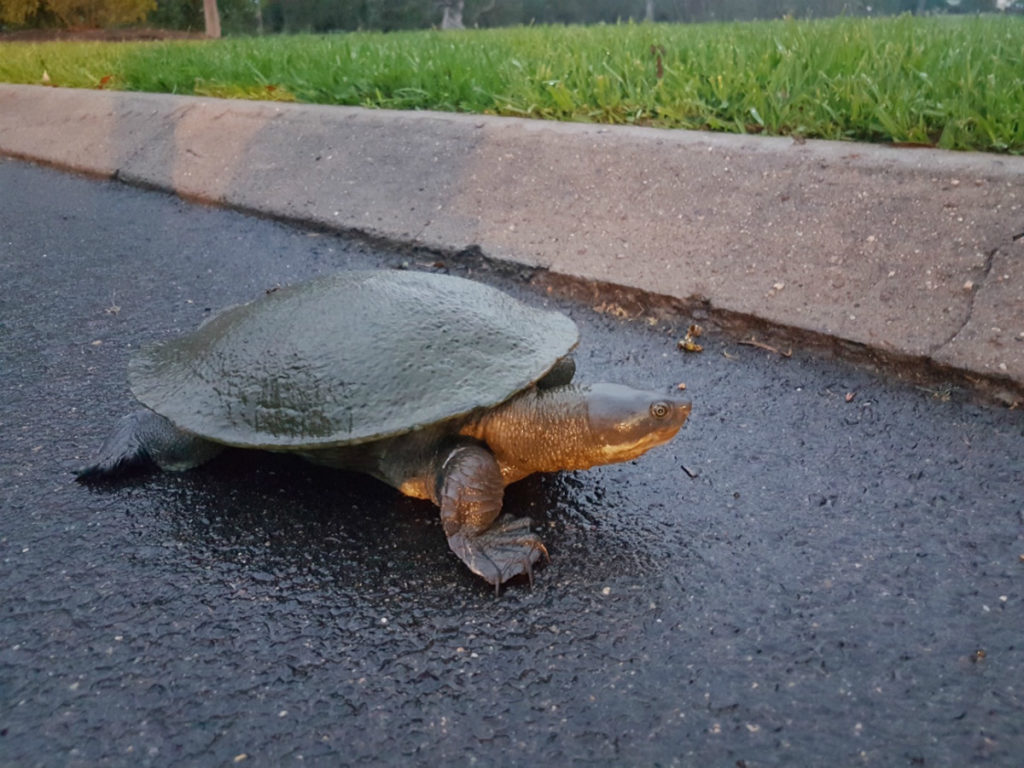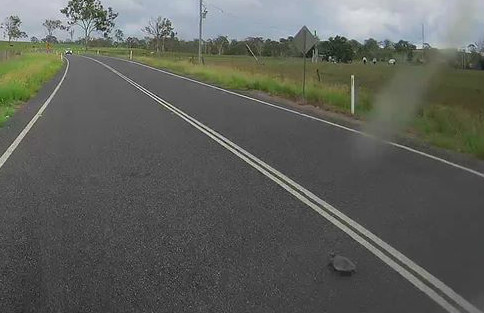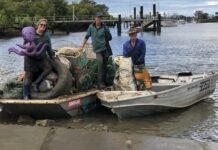
Krefft’s turtle enjoys the rain and goes for a stroll
Last night’s rain was enjoyed by all locals including this Krefft’s turtle at the Bundaberg Botanic Gardens which went for an evening walk.
Keep an eye out for wildlife on the roads as they go in search of food and water.
Gardens staff made sure the turtle made it safely across the road and into the lake.

According to the Australian Museum, during times of drought, these turtles may be encountered crossing roads in search of more permanent bodies of water.
The museum says this species of short-necked turtle was described by Dr JE Gray of the British Museum of Natural History in 1871.
The first specimens were collected from the Burnett River by the Australian Museum under then curator Gerard Krefft, who later forwarded them to the British Museum.
The species was therefore named by Dr Gray Chelymys krefftii in honour of Krefft.
This short-necked turtle is the only species of freshwater turtle east of the Great Dividing Range that has facial stripes, which are bright to pale yellow in colour and extend back from the eye to the ear.
The shell is deep and oblong-shaped, with an olive-brown to blackish-brown colour and blue-green tinge underneath.
Krefft’s turtle habitat and distribution
The Krefft’s turtle lives in larger permanent rivers and swamps, river overflows and lagoons. Typical habitat has reeded areas for young to hide when resting. Adults will bask on exposed logs and rocks above the water.
The species occurs only in Queensland within the drainage systems of the eastern side of the Great Dividing Range.
In the Burnett River, Krefft’s turtles have been observed actively foraging in winter, and in captivity these turtle can remain active in winter temperatures as low as 11-14 degrees.
Happily, the population remains healthy in numbers.







